Weeds are pesky and invasive plant species that grow in gardens. This makes it difficult for desirable plants to get substantial water, sunlight, airflow, and nutrients.
Broadleaf weeds are common and noticeable weeds that grow aggressively and quickly, which is why they must be exterminated before they spread throughout your garden.
So, what are the best broadleaf weed killers and herbicides? Here’s a curated list of 7 affordable and effective solutions:
- Trimec Southern Broadleaf Herbicide
- Monterey Vegetables Pre-Emergent Weed Controller
- RM18 Fast-Acting Broadleaf Weed & Grass Killer
- Spectracide Broadleaf Weed Stop For Lawns
- Ortho BroadLeaf Weed Killer Ready-To-Use Spray
- Roundup Ready-To-Use Weed & Grass Killer III
- Green Gobbler Organic 20% Vinegar Weed & Grass Killer
To know more about the specifications of these products, how to identify weeds, how weed killers really work, and how to prevent the growth of weeds in your gardens, yards, or lawns, read further this article!
Weed Identification
There are 3 types of weeds based on their life cycles, namely:
- Annual weeds germinate, grow, flourish, produce seeds, and die within 12 months or less. They are further classified into summer annuals, which germinate during warmer seasons, and winter annuals, which germinate during cooler seasons.
- Biennial weeds will germinate and grow in their first year, forming a plant-like form with no stalk called a rosette. In their second year, a central stalk grows and elongates. The weeds die after flowers or seeds are produced.
- Perennial weeds last for more than 2 years and are reproduced from vegetative parts. They’re more difficult to get rid of since they’re relatively persistent.
Weeds can further be identified and categorized based on how they grow. Here are the following weed groups you should look out for:
Grassy and Grass-like Weeds
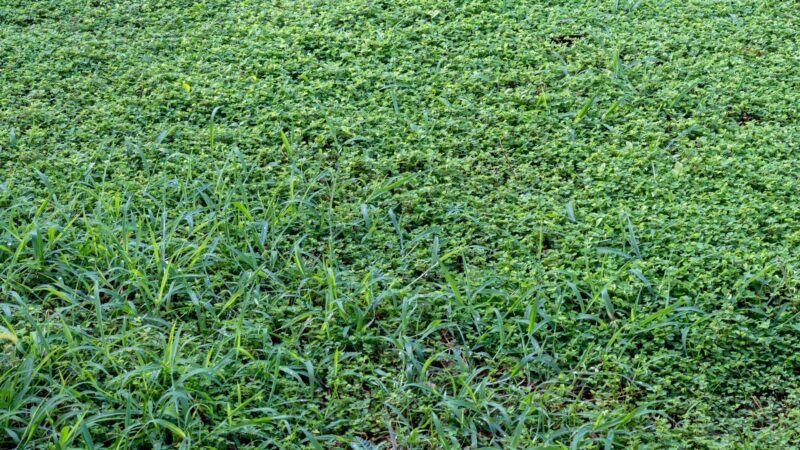
Grassy and grass-like weeds are a large family of weeds that have growing points located below ground and are classified as monocots.
Their life cycle starts when a grass seed germinates and emerges as a single leaf which then develops stems that are hollow and rounded, as well as nodes that are hard and closed. Leaf blades grow from each side of the stem and are relatively long with parallel veins.
Broadleaf Weeds
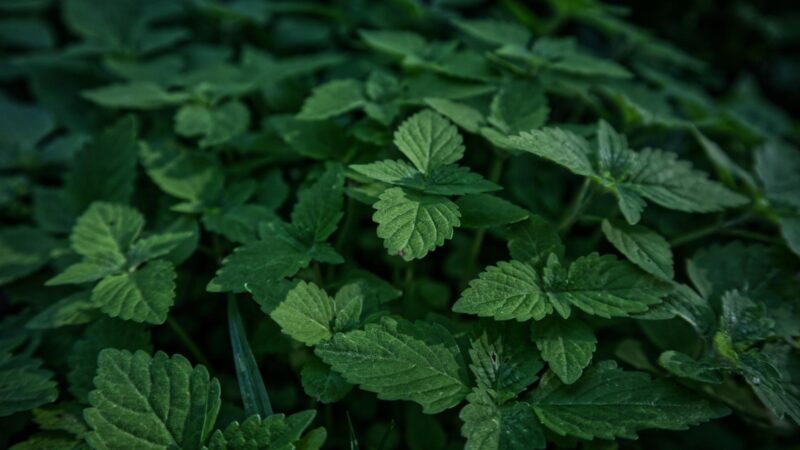
Broadleaf weeds are dicots that are characterized by their nodes that contain one or more leaves. Their seedlings emerge with two leaves and may produce flowers. Examples are dandelions, plantains, knotweeds, and thistles.
Woody and Vining Weeds
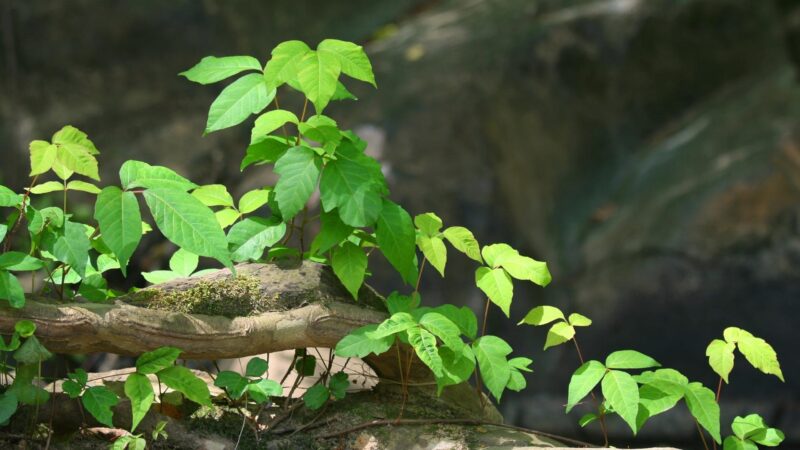
Woody weeds are trees and shrubs that are composed of woody plant tissues. Examples are bush honeysuckle, burning bush, and Japanese barberry.
Vining weeds are those that either grow by climbing, twining, using tendrils, or aerial roots on vines. Examples are poison ivy, trumpet creeper, and honeyvine milkweed.
Both types of weeds are classified as eudicots. Vining weeds are either herbaceous in nature or woody, which is why it’s often associated with woody weeds.
What to Look For in a Weed Killer?
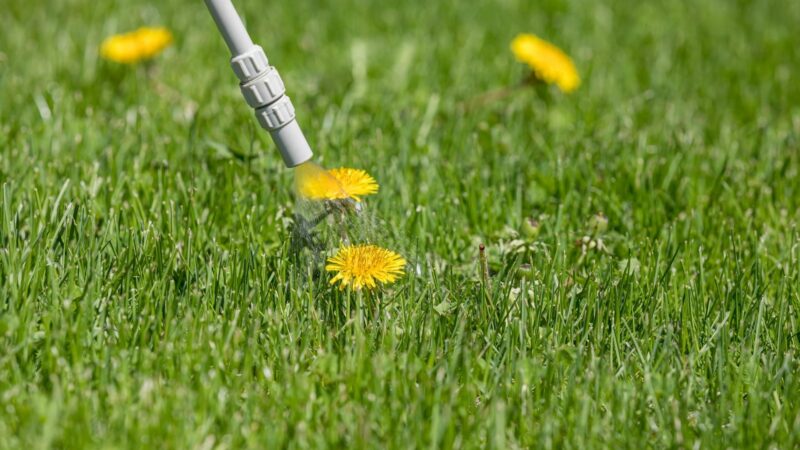
Here are some tips to remember when looking for the most suitable weed killer for you:
- Weed killers must be safe for pets and humans as exposure to the harmful and toxic chemicals that these products have can cause dangerous side effects.
- Know the uses of the product, whether it’s a direct spray application or if it needs to be premixed with water, and choose which one works best for you. If you don’t want the hassle of premixing, choose ready-to-use weed killers.
- Rainproof and water-resistant products are the best choices, as older herbicide products easily get washed away when in contact with water.
- Choose a product size based on the total area you’re planning to apply herbicides.
What Are the Best Broadleaf Weed Killers and Herbicides?
Trimec Southern Broadleaf Herbicide
Mainly targets and controls broadleaf weeds and southern grasses such as zoysiagrass, bermudagrass, and bluegrass, this herbicide is specially formulated to combat both cool-season weeds and sensitive warm-season weeds on lawns, recreation areas, and sports turfs.
The product is made with 18.74% 2,4-D, dimethylamine salt, 3.85% Dicamba, dimethylamine salt, and 17.37% MCPP-P, DMA salt. Trimec specifically instructs users to not apply this product to Floratam St. Augustinegrass.
To use against weeds, it’s recommended to mix 0.75 ounces of this product per 1 gallon of water. It could take as little as a week and as long as 3 weeks to see results.
Product dimensions are: 12″ x 4″ x 4″, with a weight of 2 pounds.
Monterey Vegetables Pre-Emergent Weed Controller
Specially formulated for controlling and exterminating annual grasses and broadleaf weeds in vegetable gardens, ornamental trees, and groundcovers, this herbicide prevents the growth of weeds after germination, so you won’t have to see the weeds at all!
The active ingredient is 43% Trifluralin, which is known to effectively kill broadleaf weeds and grasses. The product also includes petroleum distillates.
Monterey instructs to apply the herbicide to the soil surfaces of the weeds before watering them. This provides 5 months’ worth of protection for your garden against the growth of weeds. The manufacturer ensures that other plants won’t be harmed when using the product.
Product dimensions are 4.8″ x 2.5″ x 8.5″, with a weight of 2.33 pounds.
RM18 Fast-Acting Broadleaf Weed & Grass Killer
Guaranteeing fast results in just 12 hours and total weed control for unwanted grass weeds, brushes, and broadleaf plants, this weed killer can treat up to 31,800 square feet of vegetation. It’s also deemed completely safe for people and pets.
This product is a combination of two herbicides, 18% Glyphosate, isopropylamine salt, and 0.73% Diquat dibromide, as its active ingredients, which can be used for over 100 species of weeds.
For weed control, 6 fluid ounces of this weed killer should be mixed in 1 gallon of water and sprayed evenly on the foliage of grasses until they’re thoroughly wet. Desirable plants should be shielded from the mixture as they can be negatively impacted by it.
Product dimensions for the 2.5-gallon variant are 7” x 9” x 14.5”, with a liquid volume of 320 fluid ounces.
Spectracide Broadleaf Weed Stop For Lawns
This weed killer can exterminate over 460 types of weeds by their roots, including dandelions, clovers, yellow nutsedge, and chickweeds, with visible results in just 3 hours. Use it during the spring and fall seasons to effectively kill weeds while they’re young and actively growing.
Weed Stop contains 7.57% 2,4-D, dimethylamine salt, 2.73% Mecoprop-p, dimethylamine salt, 0.71% Dicamba, dimethylamine salt, and 0.18% Sulfentrazone as active ingredients.
Apply during the daytime when outdoor temperatures are between 45°F and 90°F. Check the product label for specific instructions on the application rates for different types of weeds depending on the size of the area to be treated.
Spectracide warns not to use against bitterblue or floratam St. Augustinegrass and zoysiagrass that are emerging from dormancy.
Product dimensions of the 40-ounce variant are 10.56” x 8.68” x 12.12”, with 240 fluid ounces of liquid.
Ortho BroadLeaf Weed Killer Ready-To-Use Spray
If you don’t like the hassle of premixing weed killers, this ready-to-spray product is your best choice. Ortho boasts visible results in just one application against over 200 weed species down to their roots, including clovers, dandelions, and foxtails, without disturbing any desirable plants.
WeedClear contains the active ingredients 0.313% 2,4-D, dimethylamine salt, 0.104% Quinclorac, and 0.029% Dicamba, dimethylamine salt.
Attach a garden hose to the sprayer, then apply it to the weeds by sliding the switch to “ON.” Make sure your lawn surfaces are wet and evenly sprayed. Please check the product label for instructions on which weeds this herbicide shouldn’t be used on.
Product dimensions are 4.88″ x 9″ x 12″, with a weight of 9.48 pounds.
Roundup Ready-To-Use Weed & Grass Killer III
With the ability to kill even the most stubborn weeds and grasses to their roots, this ready-to-use herbicide has a convenient formula that doesn’t need any mixing. It can be used in and around flower beds, mulched beds, vegetable gardens, and tree rings.
Active ingredients are 2% Glyphosate, isopropylamine salt, and 2% Pelargonic acid and related fatty acids.
Simply spray using the wand, designed for ergonomic use to reduce user fatigue, on the weeds you wish to kill until they’re thoroughly soaked. Desirable plants should be rinsed off with water when it comes in contact with the weed killer.
Product dimensions are 9.51” x 12.5” x 6.18”, with 170 fluid ounces of liquid.
Green Gobbler Organic 20% Vinegar Weed & Grass Killer
This is a unique product in this list that doesn’t contain toxic chemicals and is made organically from corn. This weed killer is perfect for agricultural, residential, industrial, and commercial use against all types of undesirable grasses and weeds.
Directly spray the mixture against weeds and grass until thoroughly wet. The 20% acetic acid present will immediately kill weeds within just 24 hours of application.
Product dimensions are 12.48” x 9.57” x 5.98” with a weight of 8.95 pounds.
How Do Weed Killers Work?
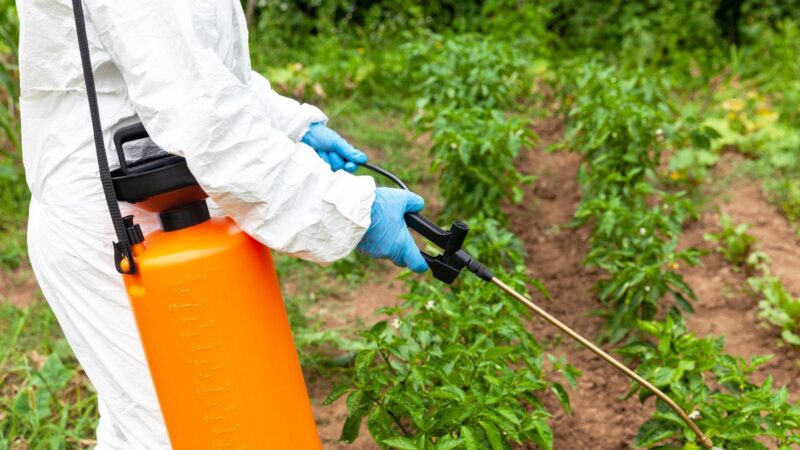
Here are the different types of weed killers and how they work to remove and/or prevent the growth of weeds:
- Growth regulator herbicides are applied to the foliage of the weeds but can also be applied directly in the soil. They kill weeds by upsetting their hormonal balances that regulate essential functions such as protein synthesis and respiration.
- Photosynthesis inhibitors disrupt the process of photosynthesis in weeds through their plant chloroplasts and are applied through the foliage of the weeds. This results in gradual starvation and rapid death, depending on the ingredients of the herbicides used.
- Pigment inhibitors work by destroying the weed’s chlorophyll found in the leaf tissue. They’re applied in the roots, where it translocates to the shoot tissue and then inhibit the production of carotenoids, which are protective molecules for chlorophyll. With the lack of carotenoids, chlorophyll is effectively destroyed, causing plant death.
- Seedling growth inhibitors are applied to the soil where seedlings germinate, just before they emerge. They either inhibit the roots or shoots.
- Cell membrane disruptors are applied thoroughly on the entire weed postemergence and work by destroying cell membranes.
- Organic arsenical herbicides are also contact herbicides, much like the cell membrane disruptors, but their mode of action is unknown. However, they’re used to control both wide and narrow-leaved grass weeds.
- Lipid synthesis inhibitors are unique herbicides that cannot act on broadleaf plants. They’re usually applied postemergence into the actively growing weed’s leaves.
- Amino acid synthesis inhibitors are fairly new to the herbicides games and are used at low rates of application. It prevents the development of the weed’s amino acids which are essential for its survival. They’re applied both on foliage and in the soil.
How to Apply Weed Killer? | A Step-by-Step Guide
Step 1: Carefully read the product label. It will contain essential information such as the active ingredients, application rate, weeds it can and cannot exterminate, safety and handling precautions, and special instructions.
Step 2: Depending on the product and manufacturer instructions, either directly apply to the soil or foliage (for ready-to-use herbicides) or premix with water accordingly before application.
Step 3: Some products aren’t selective when killing weeds. This means that they could potentially kill desirable plants too. Make sure you’ve read the product label to know whether or not you should be shielding other plants on your lawn.
Step 4: Lastly, patiently wait for the results! It can take as little as 12 hours to over 3 weeks.
How Do I Stop Weeds Growing in My Garden Bed?
- Control any existing weeds either by physical control (hand-pulling, hoe cutting, manual-powered rotary cultivator) or chemical control through the use of herbicides.
- When planting vegetables, make sure they’re planted relatively close to each other to decrease the viable space for weeds to germinate and develop. If your vegetables are already planted, plant cover crops every season between the spaces to prevent weed emergence.
- If you don’t want to use chemicals, solarize your garden beds by allowing the sun to heat weed seeds and prevent them from germinating.
What Kills Weeds Permanently?
Herbicides, preferably non-selective weed killers, so your desirable plants are left unscathed, and vinegar can kill weeds permanently.
How Do I Keep Weeds Out of My Garden Naturally?
Mulch is the most effective organic product to use against weeds. Apply three inches of mulch, such as sawdust, wood chips, pine straw, and wheat straw, onto garden soil to prevent weed growth.
Tilling or mowing every 2 to 4 weeks in the summer season, followed by late summer seeding, can also kill and naturally prevent weeds.
Is It Better to Pull Weeds or Spray Them?
It depends on the growth and abundance of your weeds. If you’re dealing with large weed infestations, it’s better to spray them. Otherwise, pulling weeds can be effective on small infestations.
Is Pulling Weeds a Waste of Time?
Pulling weeds is not a waste of time, but it also depends on the number of weeds you have. If you only have a few, you can be done within 10 minutes or so, and that’s not much time wasted. However, if you’re dealing with a lot of weeds, it can be heavily time-consuming. In this case, it’s better to spray instead!
Weeds can either grow annually, biennially, or perennially and are further divided into three groups based on how they grow. These are broadleaf weeds, grassy and grass-like weeds, and woody and vining weeds.
List of Sources
Weed Control in Pastures Without Chemicals
Controlling Weeds in Home Gardens